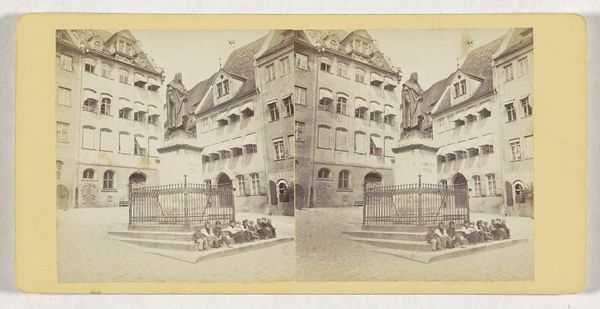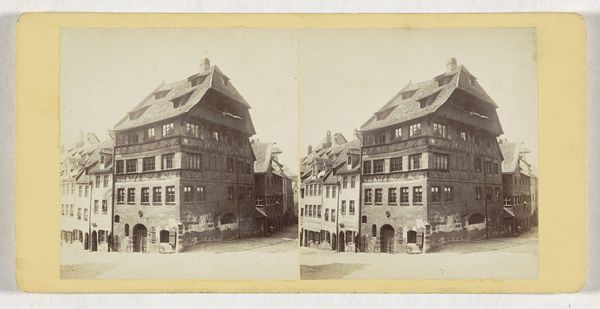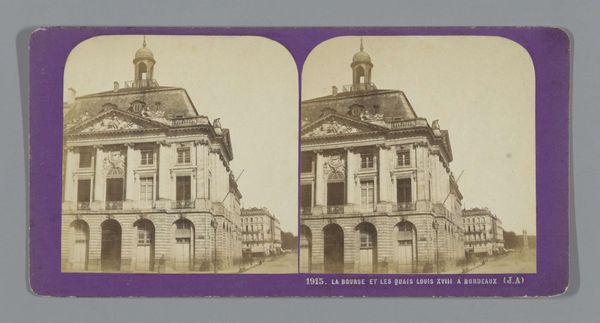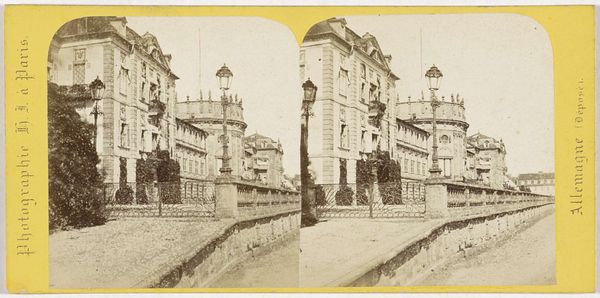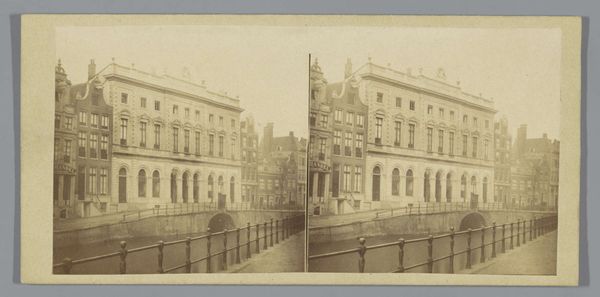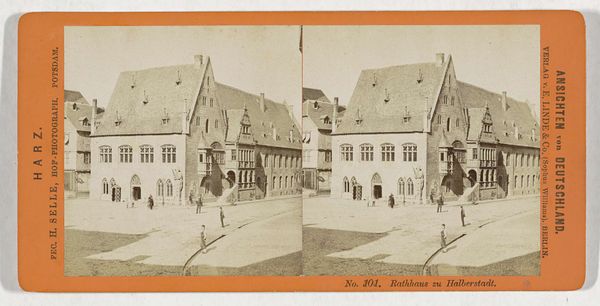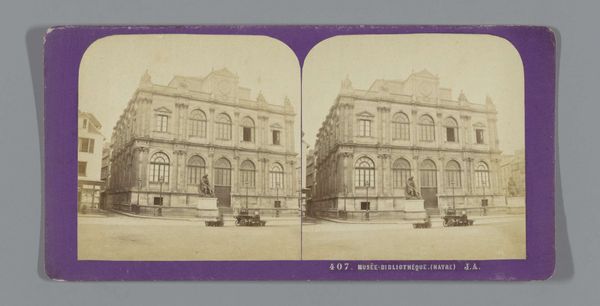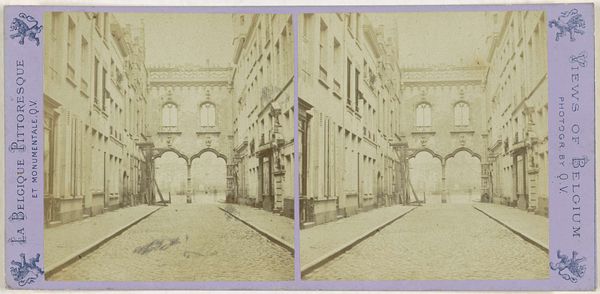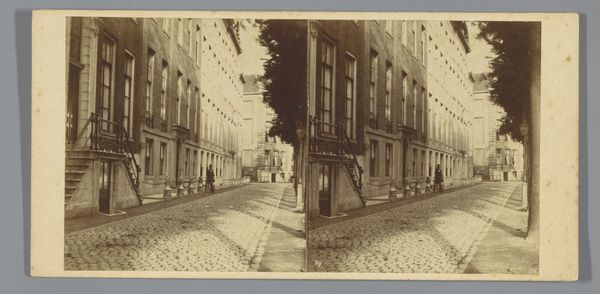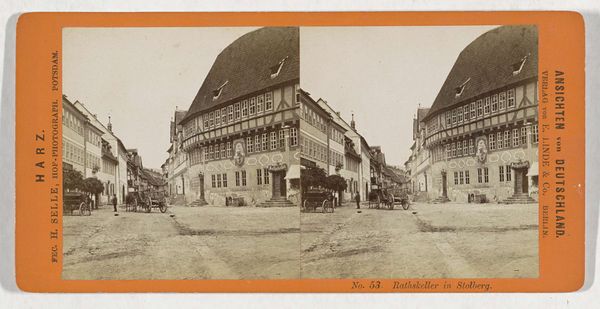
Dimensions: height 85 mm, width 175 mm
Copyright: Rijks Museum: Open Domain
Curator: This albumen print, dating from the 1860s, captures the statue of Albrecht Dürer in Nuremberg. I find the use of photography here particularly interesting; it represents a shift in how public monuments and historical figures were disseminated. Editor: I do find this sepia-toned cityscape serene; it is also thought-provoking that it is printed as a stereo card! How might the choice of photographic materials and their use influence its reception, or even its meaning? Curator: The albumen process itself is crucial. It democratized image production. A statue dedicated to an artist celebrated for his engravings—that is reproduced via mass-produced photographic prints, rather than engravings—comments on labor and production. Do you see that as significant? Editor: Absolutely! It almost feels contradictory. The statue honors Dürer, famous for his meticulous engravings, but the photograph allows for almost limitless reproductions of the statue itself. It shifts the focus, perhaps, from the individual skill of the artist to the accessibility of the image. Curator: Exactly. We should also consider who had access to photography at this time. Were these stereo cards available to the working class, or primarily consumed by the bourgeoisie? Understanding the economic realities surrounding its production and distribution helps us interpret its significance. What labor was hidden, made invisible, in this mode of distribution? Editor: That is true; focusing on the circulation of the image really contextualizes the piece, revealing social stratifications in terms of both labor and consumption. I've never considered stereo cards as a potential for social critique before. Curator: It reveals the intersection of art, technology, and society at the time. Material analysis can offer insights into social relations that are invisible in traditional art historical approaches. Editor: That definitely makes me see it differently! Now I see a tension between celebrating individual artistry while participating in a rapidly industrializing, mass-producing society.
Comments
No comments
Be the first to comment and join the conversation on the ultimate creative platform.

